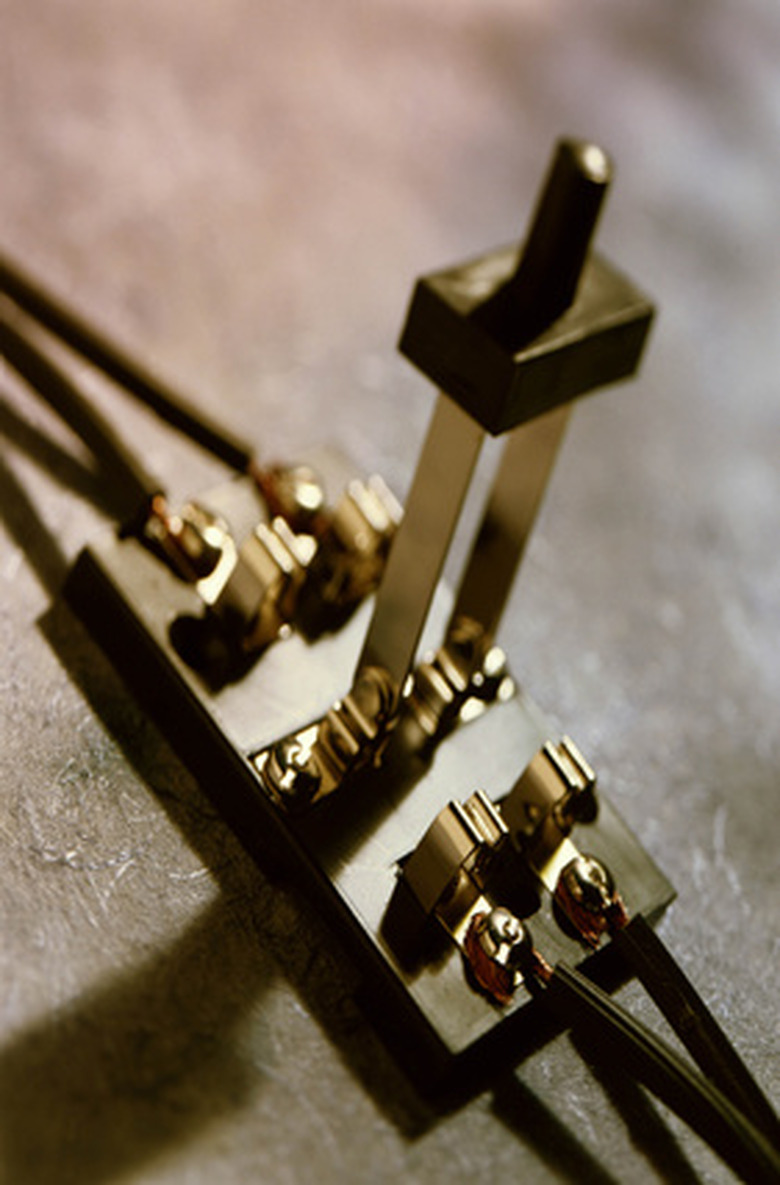How To Wire A DC Switch
When installing direct current (DC) appliances, including a switch to turn the item on and off is a critical part of the installation. Setting up an interior light, a speaker and subwoofer combination or a bank of LEDs always requires a switch to turn them on or off. While adding a switch when building a project from scratch is easiest, adding a switch to an existing installation is also possible.
Step 1
Determine where you would like to put the switch. The most common place to put it is directly between the power supply and the item being powered.
Step 2
Find the positive wire—most likely red—going from the power supply to the item. Cut it with the wire cutters, preferably about in the middle of the wire's length.
Step 3
Use the wire strippers to strip 1/4 to 1/2 inch from the cut ends of the wire.
Step 4
Attach the two stripped ends to the two terminals of the switch. Most simple switches have two terminals and are wired inline. If the terminals are of the screw variety, loosen the screw with a screwdriver, wrap the stripped wire around the screw, and then tighten it.
Step 5
If the terminals are not of the screw variety, or if a better connection is desired, use the soldering iron and solder to solder the connection, ensuring that it is tight and electrically sound.
Things Needed
- Switch
- Soldering iron and solder (optional)
- Wire stripper and cutter
TL;DR (Too Long; Didn't Read)
If necessary or desired, mount the switch to the chassis of the powered item. This helps prevent wear and tear on the wires and prevents short-circuiting.
Always make sure the switch is rated for the current that you will be passing through it. Passing too high of a current through a switch will result in switch failure at best, and a short circuit or a fire at worst.
Warning
If high voltages are involved or if you doubt your own abilities, consult a licensed electrician.
References
- "Electricity Demystified"; Stan Gibilisco; McGraw Hill; 2008
Cite This Article
MLA
Donat, Wolfram. "How To Wire A DC Switch" sciencing.com, https://www.sciencing.com/wire-dc-switch-6533626/. 24 April 2017.
APA
Donat, Wolfram. (2017, April 24). How To Wire A DC Switch. sciencing.com. Retrieved from https://www.sciencing.com/wire-dc-switch-6533626/
Chicago
Donat, Wolfram. How To Wire A DC Switch last modified March 24, 2022. https://www.sciencing.com/wire-dc-switch-6533626/
